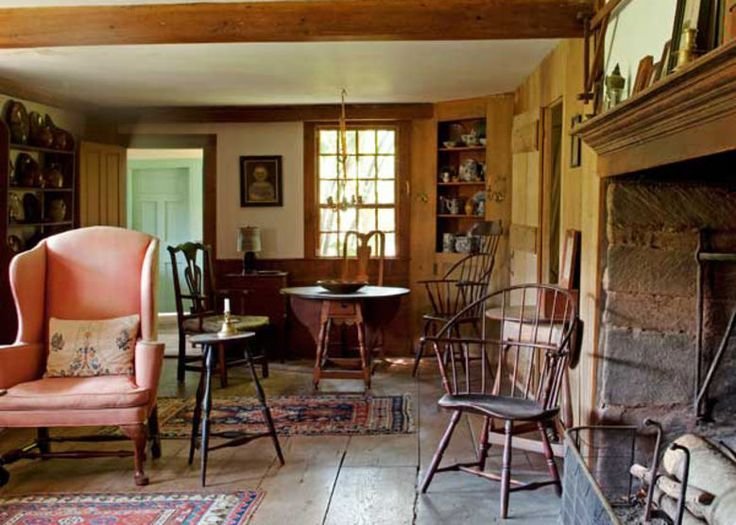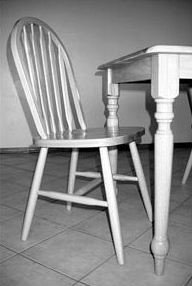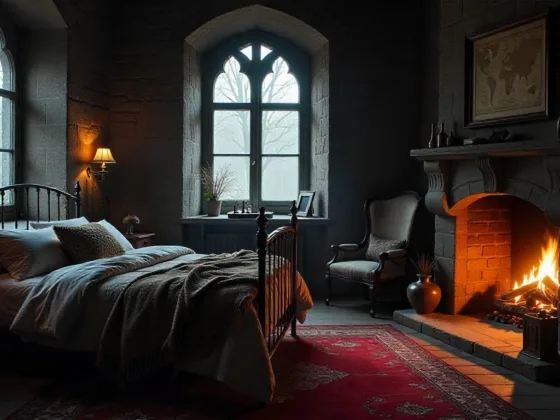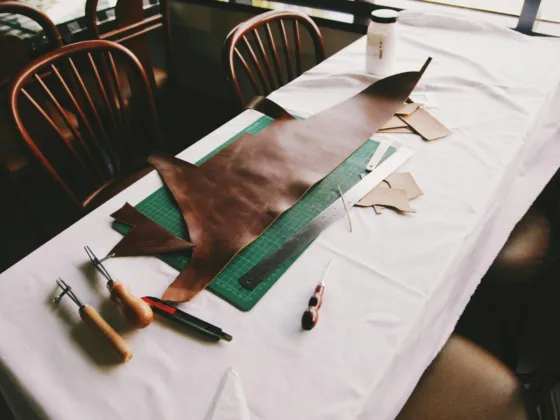Table of Contents Show
Early American home decor and furnishing stem from a multitude of styles. The decorating schemes associated with early American decor are diverse in their application but share common characteristics.
Early American home decor and furnishing is a versatile and easily personalized style of design. Rooted in the independent spirit of the first colonizers, early American decor was inspired by natural materials, convenience, and the desire to create aesthetically pleasing environments within colonial-style homes.
The style known now as Early American is a collective of interior fashions with international roots.

Materials of Early American Home Decor
Machine-made materials, such as plastic or resin, were not available when settlers came to America. Homes and public buildings were constructed from wood and stone.
This use of natural materials also influenced interior design. Furniture was carved from local woods, fabric woven from raw materials such as cotton and wool, and pottery made from earthen materials such as clay and pewter.
To affect a contemporary Early American home decor style, use cotton, linen, and wool fabrics for window treatments, bed linens, rugs, and upholstery.
Ladderback and slat back chairs, and benches carved from local wood types, are also part of the Early American design scheme. Hardwood or stone flooring and stone fireplace surrounds add an authentic touch.

Early American Home Decor Color Schemes
Though early settlers didn’t have the advantage of going to the local hardware store for a can of paint, they did bring color into their homes.
Dyed fabrics for curtains and brightly colored quilts for beds added charm and were, of course, of practical use. As America became a more advanced civilization, the ability to expand on design grew proportionately.
As early as the 18th century, homeowners painted their wood trim in pale colors that coordinated with the lighter colors of plaster walls.
Wood planks were used in flooring and stained to resemble the dark rich color of oak or walnut or the paler shades of pine or maple.
Fabrics still retained the brightest colors, showing bright reds, deep blues, purples, and sunny yellows for quilts, bed linens, upholstered chairs, couches, and window treatments.
International Roots
From the simply carved bench to the upholstered wingback chair, early American decor has, and still does, include a multitude of styles.
Influenced by English design, Jacobean furniture is large in scale with rounded corners and layered carving. The Shaker influence inspires simple, clean lines and minimal carving.
The French bring a rustic appeal to what is now called French Country; the influence is seen in the country blue so often identified with Early American style.
Even the Scandinavians from the northern regions of Europe helped shape the design, adding painted chests and chair backs to the decor scheme.
Pulling It All Together
With such diversity in influence and variation in style, one might think the Early American style was vague or lacking in distinctive characteristics.
On the contrary, the use of natural materials, the selective color scheme, and the eclectic mix of styles make the design uniquely American and easily recognized.
Hardwood floors and textured walls make for a solid background. Add painted or stained wood trim to complement the walls, and visually define rooms and entrances.
Four-poster beds layered in quilts and ruffled pillow slips for the bedroom; wingback chairs and round back couches for the sitting room; and a heavy table with carved chairs and benches for the dining room all define the Early American style. Add painted chests and side chairs to accent the assembled furniture.
Floral printed fabrics are used for upholstery and drapery. Quilts are hung on racks and used as wall art as well. Wooden bowls, clay pottery, and pewter platters all add to the charm of this style.
Early American home decor and furnishing reflect the mixing and melding of many national styles, just as America represents the melding of many nations.









